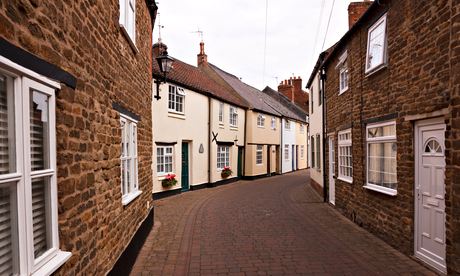
Another earthquake has struck Rutland in the East Midlands, 24 hours after one shook houses for around 10 seconds.
Initial data released by the British Geological Survey (BGS) said the latest quake struck Oakham at around 7.50am on Friday and that it was bigger than Thursday's, measuring magnitude 3.5.
Thursday's 3.2-magnitude quake occurred at 7.07am and was the biggest in the region since October 2001.
A BGS spokesperson said that it was unexpected for there to be a second earthquake in exactly the same location. The organisation had already received 600 reports from members of the public, compared with 450 on Thursday.
In comments posted on the BGS Facebook page, residents in Rutland and neighbouring Lincolnshire claimed the latest quake was more powerful than the first.
Dave Stevens, who lives in Oakham, wrote: "Definitely another quake, but different to yesterday's. This one rumbled for several seconds, suggesting it might be centred further away.
"Yesterday's was a sudden loud bang. This morning's felt more like the 2008 Market Rasen quake. It really rattled the doors of my shower!"
Ian Barron, another visitor to the BGS social media site, posted: "Just experienced a second earthquake at 7.50 am the next day. Scary stuff living in Whissendine."
Rutland has been hit by the biggest earthquake of 2014 so far. However, it was not as strong as the 5.2-magnitude Lincolnshire earthquake in 2008. Tremors were felt widely across the country, and even in the far north of France. No one was killed but one man's pelvis was broken when a piece of chimney fell on to his bed.
The most powerful earthquake recorded in Britain was at the Dogger Bank in 1931, off the coast of Yorkshire in the North Sea. The magnitude was 6.1 but as the quake was in the ocean, the damage was significantly less. Some buildings suffered structural collapse, and at Madame Tussauds in London the waxwork head of homeopath Dr Crippen fell off.
The most damaging earthquake in Britain was the 4.6-magnitude 1884 Colchester "Great English Earthquake". Reports claimed that more than 1,250 buildings were damaged and up to five people were killed.
The British Geological Survey says that is it unclear why earthquakes occur in the UK, but some reasons may include regional compression caused by the movement of Britain's tectonic plates, and uplift resulting from the melting of ice sheets that covered parts of Britain thousands of years ago.



Reader Comments
to our Newsletter